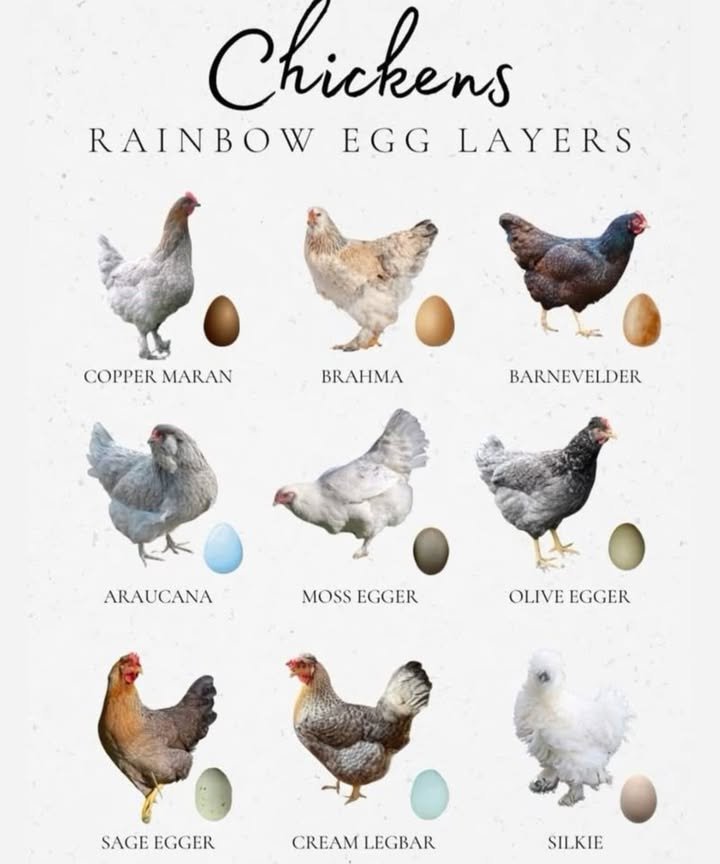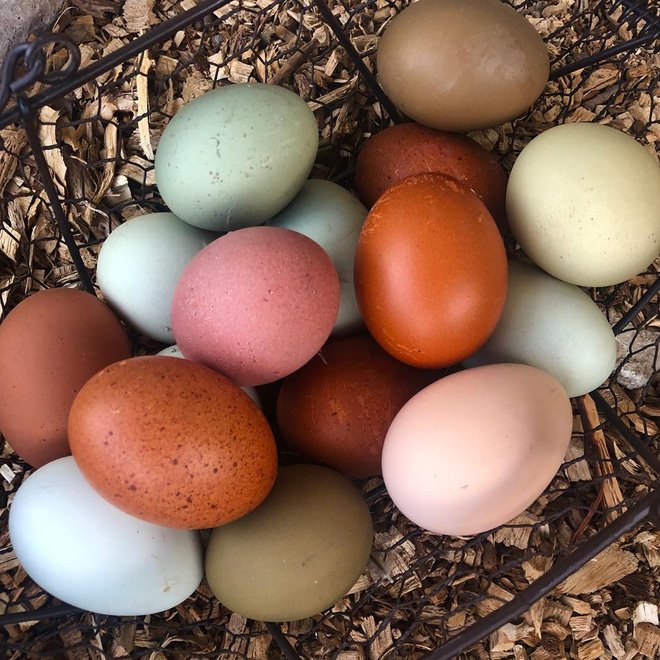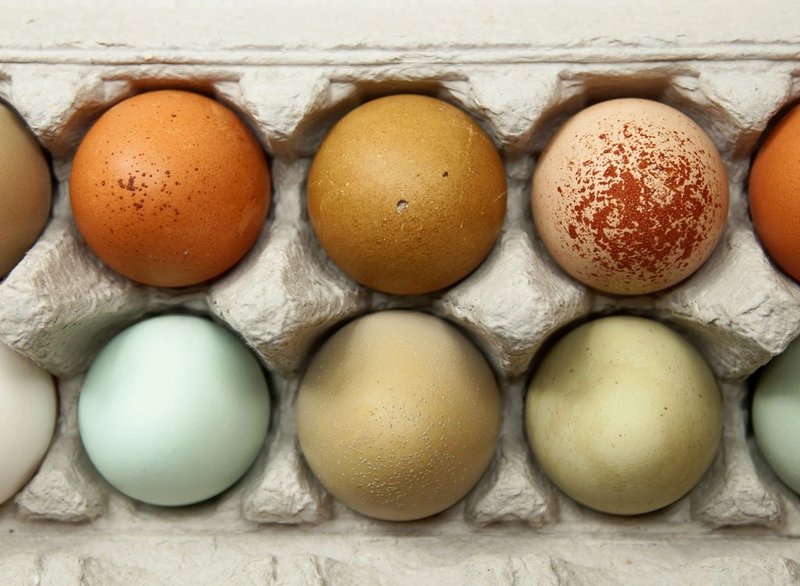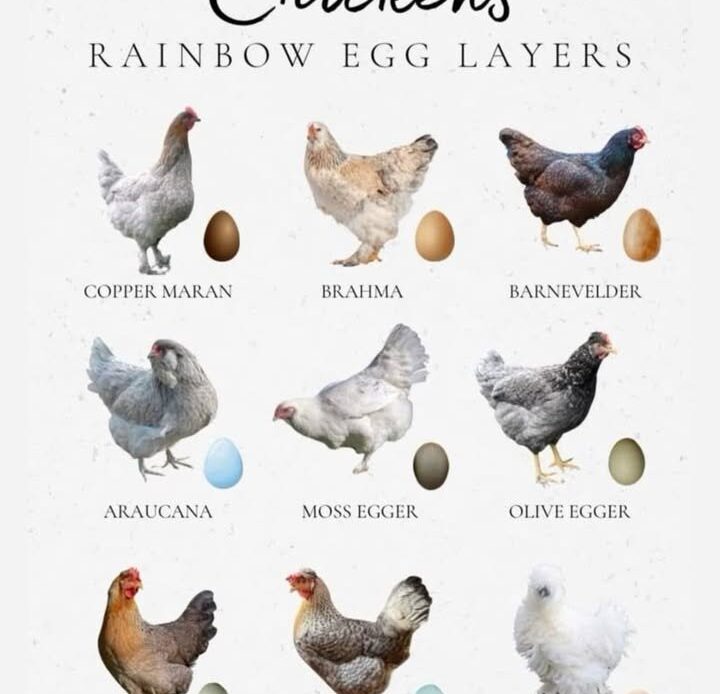Eggs come in an astonishing variety of colors, ranging from classic white and warm brown to vibrant blue and striking green. Many people believe that the color of an egg has something to do with its nutritional value or taste, but the truth is far more fascinating. The shade of an eggshell is primarily determined by genetics, with specific chicken breeds laying different hues. But what exactly influences these colors, and is there any connection between egg color and quality? Let’s dive into the science behind colorful eggs and explore what makes each one unique.
## **Why Do Chicken Eggs Come in Different Colors?**

At its core, eggshell color is dictated by a hen’s genetics. Different chicken breeds carry specific genes responsible for depositing pigments on the eggshell during its formation. While all eggs initially start as white inside the hen’s reproductive tract, pigments are added as the egg develops. The two main pigments responsible for the variety of colors are:
– **Protoporphyrin** – This pigment is derived from hemoglobin and produces reddish-brown hues, resulting in brown eggs.
– **Oocyanin** – This pigment is a byproduct of bile and gives eggs a blue or green tint.
The way these pigments are deposited determines the final color of the egg. Some breeds lay eggs with only protoporphyrin (brown), others with only oocyanin (blue), and some have a mix of both, creating shades of green or olive.
## **Popular Chicken Breeds and Their Egg Colors**

Different breeds lay eggs of varying hues. If you’re interested in raising backyard chickens and want a colorful egg basket, here’s a guide to some of the most well-known breeds and their eggshell colors.
### **White Eggs**
White eggs are laid by chickens that do not deposit additional pigment on their shells. These eggs have a clean, classic look.
– **Leghorn** – One of the most popular egg-laying breeds, known for producing large numbers of white eggs.
– **Andalusian** – A Mediterranean breed that lays bright white eggs.
– **Polish** – A unique-looking breed with a feathery crest, producing medium white eggs.
### **Brown Eggs**
Brown eggs come in different shades, from light tan to deep chocolate brown, depending on the amount of protoporphyrin deposited on the shell.
– **Rhode Island Red** – A highly productive breed that lays medium to dark brown eggs.
– **Sussex** – A dual-purpose breed known for light brown eggs.
– **Marans** – Famous for their deep, rich chocolate brown eggs, especially the Black Copper Marans.
### **Blue Eggs**
Hens that produce blue eggs deposit oocyanin throughout the shell, meaning the color penetrates both the inside and outside of the egg.
– **Araucana** – An ancient breed originating from South America, known for its bright blue eggs.
– **Ameraucana** – A breed developed in the U.S. that also lays blue eggs but has a distinctive beard and muffs.
### **Green Eggs**
Green eggs are a combination of both brown and blue pigments. When a hen with blue-egg genetics also inherits the brown-egg trait, the result is a beautiful green or olive-colored egg.
– **Easter Egger** – A hybrid breed that lays a variety of colors, including green, blue, and pinkish hues.
– **Olive Egger** – A crossbreed between a blue-egg layer and a dark brown-egg layer, resulting in deep olive-colored eggs.
### **Speckled Eggs**
Some breeds lay eggs with unique speckles, making them stand out in any egg collection.
– **Welsummer** – Known for their rich brown eggs with dark speckles.
– **Penedesenca** – A rare Spanish breed that lays dark brown eggs with speckles.
## **Does Egg Color Affect Taste or Nutrition?**

One common misconception is that brown eggs are healthier than white eggs, or that blue and green eggs have a different flavor profile. In reality, the color of an eggshell has no direct impact on taste or nutritional value. The factors that truly influence egg quality include:
– **The Hen’s Diet** – Chickens fed a balanced diet rich in omega-3s and nutrients will produce more nutritious eggs.
– **Living Conditions** – Free-range hens that forage for natural foods tend to lay eggs with richer yolks.
– **Freshness** – Fresh eggs have firmer whites and more vibrant yolks compared to older store-bought eggs.
So, whether you’re cracking open a white, brown, blue, or green egg, the taste and nutrition depend on the care and diet of the hen that laid it—not the color of the shell.
## **Fun Facts About Egg Color**
Egg color is more than just genetics—there are some surprising facts about how these pigments develop:
✔ **All eggs start white** – Before pigmentation is added, every egg begins as a white shell inside the hen’s reproductive system.
✔ **Brown eggs are only pigmented on the surface** – If you scrape the outer layer of a brown eggshell, you’ll find white underneath.
✔ **Blue eggs are blue all the way through** – Unlike brown eggs, blue eggs are pigmented inside and out.
✔ **Speckled eggs happen due to calcium deposits** – Sometimes, tiny spots appear on an egg due to uneven pigment distribution or excess calcium.
✔ **Eggshell color can lighten over time** – As hens age, the intensity of their eggshell color may fade.
## **How to Choose the Best Eggs for Your Needs**

If you’re selecting eggs at a grocery store or farmer’s market, consider the following factors:
– **Farm-Fresh vs. Store-Bought** – Fresh eggs typically have firmer whites and a richer taste.
– **Pasture-Raised vs. Cage-Free** – Pasture-raised eggs usually have deeper orange yolks due to a more varied diet.
– **Organic vs. Non-Organic** – Organic eggs come from hens that are fed non-GMO, chemical-free feed.
Regardless of the color, choosing high-quality eggs from well-cared-for hens will always yield the best results for your cooking and baking needs.
## **Conclusion**
The secret behind colorful eggs is purely genetic, with each breed of chicken determining the hue of the eggshell. While some may believe that darker or more vibrant eggs are healthier or tastier, the truth is that nutrition and flavor are influenced more by the hen’s diet and environment. Whether you prefer classic white eggs, deep brown shells, or rare blue and green varieties, every egg has its own unique beauty.
So the next time you crack open an egg, take a moment to appreciate the fascinating science behind its color. Who knew something as simple as an eggshell could hold such an interesting story?
